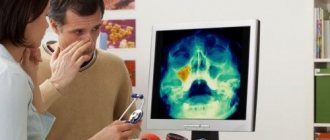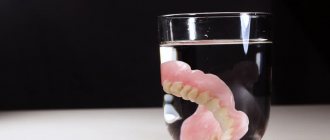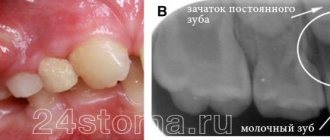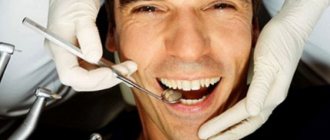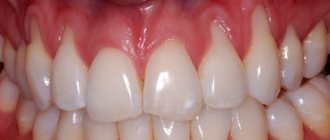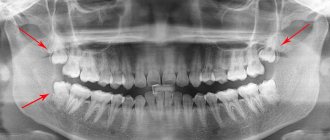Imagine a mouth with rotten teeth and the smell that comes from them, it is not difficult to guess how repulsive and unpleasant a person with such a problem looks. Bad teeth greatly spoil the impression of a person’s appearance, prevent him from communicating normally with other people, and disrupt his psychological state.
However, this problem is not only aesthetic. Dentists warn that rotten teeth cause arthrosis, polyarthritis, and disrupt the condition of the skeletal system. The products of decay and the microbes that provoke them are carried throughout the body with saliva and blood. A person begins to have problems with organs that, at first glance, have nothing to do with teeth. The infection gradually affects the bone tissue and can reach the brain.
What happens if you ignore the body’s signals, drown out the pain with pills, mask the smell with air fresheners? It may be possible to hide the negative symptoms for a while. However, as they accumulate, they will lead to the appearance of other and not only dental problems.
Causes of tooth decay. How to stop him?
To provide adequate treatment, the doctor must first determine the cause of the disease. Otherwise, the measures may turn out to be useless, the process will continue to develop. The causes of tooth decay are external and internal factors. Despite the fact that enamel is considered one of the most durable materials in the body, under unfavorable conditions it quickly deteriorates. As a result, microbes gain unhindered access to the inner, less protected part of the tooth.
To cope with this problem at the initial stage, one visit to the dentist is usually enough. He clears the cavity of affected tissue and closes it with a filling. However, simple neglect of their health and fear of the dental office make people postpone the visit. The result is deterioration of the teeth and their loss.
How can a dentist help?
Depending on the degree of tooth decay, stage and causes of fragility, as well as taking into account the natural appearance of the dentition, the doctor selects treatment methods:
- Installation of fillings - used when the tooth has crumbled slightly and it is possible to restore it completely.
- Veneers - ceramic onlays will be the solution if the front tooth has crumbled and it is impossible to restore it to its original aesthetic state.
- Inlays – if a chewing tooth is destroyed by 50%, inlays will help; their advantage is that they are more durable and airtight than fillings and can withstand loads well.
- Crowns – if the crown part of the tooth is completely destroyed, prosthetics with crowns are necessary.
- Removal and implantation - if the tooth is crumbled and the tooth root is also almost destroyed, it is removed, and then implantation is carried out and a crown is put on.
Our dentist will select a method based on the individual characteristics of the teeth, their location and condition. It is worth noting that regular visits to our clinic reduce the risk of tooth decay. Visit your dentist at least once a year for a professional examination to avoid serious diseases and complex long-term treatment for them.
When is a person to blame for having bad teeth?
Experts identify a number of causes of tooth decay, for which the patient himself is to blame. Knowing them, you can take timely measures to prevent the development of the disease. These reasons include:
- Smoking. Components released from tobacco disrupt metabolic processes in dental tissues. Due to this, their ability to resist adverse effects is sharply reduced.
- Alcohol, drugs. They negatively affect the functioning of the entire body, impair its protective functions and ability to recover.
- Poor nutrition. Lack of minerals and vitamins in food leads to weakening of the enamel. An excess of sweets, sour fruits, and berries contributes to the destruction of enamel.
- Unhealthy Lifestyle. Lack of physical activity, constant presence in dusty rooms, abuse of fatty, fried foods reduces the body's protective functions.
In addition, lack of or improper oral hygiene contributes to the formation of plaque. It becomes a source of food for microorganisms that gradually destroy teeth.
To protect children's teeth from further damage, it is necessary:
- make sure that there are no cracks on them, which become “gates” for caries-forming bacteria (cracks usually occur as a result of injuries);
- maintain oral hygiene, which will prevent the formation of plaque (the child should brush his teeth twice a day with age-appropriate toothpaste);
- supplement the menu with protein products that help strengthen enamel, as well as seasonal vegetables and fruits;
- if this is not possible, select a vitamin-mineral complex with the help of a pediatrician.
Negative factors beyond the patient's control
If a person does not smoke, engages in debate, and watches his diet, why do his teeth begin to rot? There may be several reasons for this:
- Bad ecology. Polluted air, poor quality water, an excess of some and a lack of other important components. Fluoride deficiency is often cited as the cause of dental problems.
- Heredity. If the parents had bad teeth or the mother did not visit the dentist during pregnancy, children often experience similar problems.
- Physiological features. Hormonal imbalance in adolescents during the growth period, in pregnant and lactating mothers.
Tooth decay is often a consequence of other diseases. Problems with periodontal tissues - gingivitis, periodontitis, periodontal disease - lead to the development of caries and cause tooth loss. If a purulent cyst forms near the root, the infection quickly spreads to the tooth. Often the deterioration of teeth is caused by diseases of the stomach, intestines, and thyroid gland.
Healthy immunity - healthy teeth
Observations show that human immunity has a direct impact on dental health. This is due to the fact that weakened human immunity is not able to provide adequate resistance to the action of microbes and harmful bacteria that have a harmful effect on the entire state of the body, including the health of the teeth and oral cavity.
Reduced immunity is the cause of the development of a number of dental diseases: gingivitis (inflammation of the gums), periodontitis (inflammation of the tissues surrounding the tooth), glossitis (inflammation of the tongue), stomatitis (inflammation of the oral mucosa), etc.
By taking care of strengthening your immune system, you are also taking care of the health of your teeth.
Characteristic symptoms and stages of disease development
Dental problems manifest themselves in different ways. It depends on the degree of damage, the sensitivity of the body, and the number of problem areas. Tooth decay does not occur in just one day.
Dentists distinguish several characteristic stages, which are characterized by certain symptoms:
- Unpleasant smell. At first it is not too noticeable. Gradually, even during a conversation, the interlocutor feels a putrid “aroma”. Its source is pathogenic bacteria. They inhabit plaque that forms at the point of contact between the gum and tooth.
- Stains on the enamel. This is the next stage of the disease, when the damage spreads deeper and damages the enamel.
- Black areas. If they are located on the root, it is very difficult to notice them. To clarify the extent of the damage, an x-ray is taken.
- Formation of the cavity. A cavity forms in place of the black spot. Through it, food debris gets to the inside of the tooth. The tooth actively “signals” about the problem with painful sensations, reaction to hot and cold.
- Pulpitis develops. By not consulting a doctor in time, the patient allows inflammation to reach the pulp. Soft tissues containing blood vessels and nerves undergo rotting. It is accompanied by sharp, unbearable pain.
The decay process ends in different ways. If it starts from the top of the tooth, it gradually spreads to the root. After the nerve dies, the pain intensity decreases. If decay affects the root first, the tooth may fall out or have to be removed.
Why do teeth rot at the gums?
Caries near the gums and on visible parts of the tooth are no different.
The reasons for its occurrence are the same, but near the gums it is more difficult to identify and treat the disease. Therefore, patients usually consult a doctor at the stage of progressive pulpitis. Timely detection helps prevent the development of caries in the gingival region. To do this, you need to periodically visit the dentist, who will correctly assess the condition of the enamel and detect the development of caries in time. Experts call gum disease a common cause of its occurrence. Food debris that accumulates in the gum pocket promotes the development of bacteria. In addition, the disease can be caused by an incorrectly installed crown, poor hygiene, or changes in the composition of saliva.
What to do with a tooth that has rotted to the root?
If the root has rotted and treatment measures do not produce results, the tooth has to be removed. Loss of the upper part leads to the development of pathologies:
- the appearance of a cyst at the root apex;
- fracture or dislocation of the root;
- injury to the gums from a splinter;
- periodontal diseases.
A rotten root becomes a source of infection that spreads to nearby tissues.
In any case, the doctor chooses the treatment. If there is a high probability of negative consequences, removal will be carried out. To avoid this, it is recommended not to skip periodic dental checkups.
A child’s teeth are rotting: to treat or not to treat?
Rotten teeth are in most cases a problem for adults. However, this process can affect baby teeth. Moreover, the path from the appearance of a small spot to a severe stage passes very quickly. The reasons for this phenomenon are the same as in adults. At the same time, we can identify characteristic factors that have a negative impact on children’s teeth:
- excessive love for sweets;
- insufficient oral hygiene;
- mother's dental problems during pregnancy.
It is impossible to stop rotting at home. You must contact your dentist immediately.
Why does bone tissue decrease when teeth are missing?
Very often, when planning dental restoration using implants, we are faced with a deficiency of bone tissue, which is accurately detected during computed tomography:
Let's figure out what it is and why it happens
Let's start with the fact that bone is a living tissue, with its own laws of life. In the case of implantation, we are talking about the alveolar bone, that is, the bone of the alveolar process - the bone where the roots of the teeth are located. And when we talk about bone deficiency, we are talking about a deficiency of the alveolar bone. This bone provides support and stability to teeth. Its entire structure is aimed at stabilization.
And when teeth are lost, the need for this bone disappears and its resorption or resorption occurs. Loss of alveolar bone can also occur with preserved teeth due to periodontitis. The loss of bone tissue increases many times over when using removable dentures, since the denture exerts unusual pressure on the gum and bone, pressure for which the bone was not “designed” to bear. As a result, we are faced with a situation where the bone - where the implants can be installed - is missing or insufficient.
An example of what can happen to the bone tissue of a patient who had a tooth removed more than 15 years ago and did not go to the doctor only because he was afraid of the sinus lift procedure is shown in detail in my article “He was afraid of the sinus lift and waited... 15 (!) years"
We will talk about methods of treating adentia in the next article.
Caries on baby teeth
As a result of long-term research, scientists were able to identify the main cause of caries in baby teeth. It becomes: microorganisms transmitted to the child from the mother. Streptococcus gets to the baby through a kiss, through a pacifier licked by the mother, or shared cutlery. Microbes come from other people through these same routes. When teething, babies are especially vulnerable to streptococcus. In addition, lack of oral hygiene, poor diet, and the composition of saliva have a negative impact.
Dentists point out that regular use of baby formulas from a bottle with a high carbohydrate content creates ideal conditions for the development of bacteria. Getting your baby used to a cup and rinsing his mouth after eating helps reduce their negative effects.
previous post
Pin in a tooth: types and advantages of design
next post
